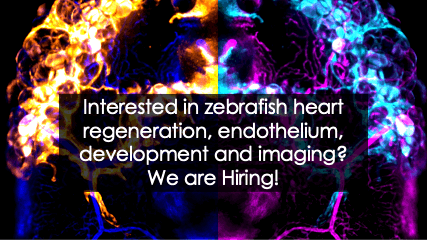Closing Date: 15 March 2021
Department/Location: Sainsbury Laboratory, University of Cambridge UK
Salary: £41,526-£52,559
Reference: PT24318
Closing date: 1st December 2020
Applications are invited for a David Sainsbury Career Development Fellowship in the Sainsbury Laboratory, Cambridge University. The Fellowships provide an opportunity for talented junior investigators to develop their own research programme and become creative leaders in the field of quantitative plant developmental biology. We are searching for a candidate who is developing an understanding of design principles that can be used to construct predictive models for complex behaviours in living systems. Applicants are likely to be using theoretical and/or quantitative experimental approaches. Examples include transcriptional modelling, computational morphodynamics, single molecule/cell imaging, systems or synthetic biology and biophysics. The position fits within the overarching goal of the Sainsbury Laboratory to develop a quantitative, dynamic and predictive understanding of plant development, but no previous experience of plant science is necessary. Rather, it is critical that the appointee is willing to engage in the Sainsbury Laboratory’s collaborative research environment.
The Sainsbury Laboratory, Cambridge University is a research institute located in central Cambridge, providing an outstanding scientific environment. It has excellent resources and core facilities, with state-of-the-art equipment including growth rooms, glasshouses, microscopy and computing facilities. It provides a collaborative research atmosphere where researchers can take risks in a supportive environment. We are seeking to appoint David Sainsbury Career Development Fellows who can both contribute to and benefit from this environment. In particular we are looking for scientists with imaginative research ideas that will contribute to our quantitative understanding of plant development by including theoretical and computational approaches.
Applicants from all nationalities are welcome to apply and will typically have postdoctoral experience in a field related to the overall scientific focus of the Laboratory. No prior experience with plants is required – researchers wishing to bring their current wet lab or modelling experience to open novel questions in quantitative plant developmental biology are welcome to apply. Applicants should be able to provide strong evidence of their potential to develop an independent research programme.
The maximum duration of the Fellowship is five years. Successful applicants will initially receive three years of funding, with an extension for a further two years contingent on a successful review and will hold an appointment with the University of Cambridge. Funds include full salary, ranging from £41,526 to £52,559, an additional 30% Gatsby distinction award, benefits and £50,000 p.a. of unrestricted research support. As they develop into independent researchers, Fellows will be encouraged to apply for external funding.
The Laboratory provides a welcoming and collaborative environment with a wide range of family-friendly benefits and development opportunities. More about the Sainsbury Laboratory and details of what the University offers to employees, can be found at https://www.slcu.cam.ac.uk/
Fixed-term: The funds for this post are available for up to 5 years.
Please ensure that you also upload your application as a single pdf file including a full CV, a research proposal for five years, and the names of at least three referees.
Further details about the post and guidance and on how to apply are available below.
All enquiries should be directed to enquiries@slcu.cam.ac.uk.
To apply online for this vacancy and to view further information about the role, please visit: http://www.jobs.cam.ac.uk/job/27222/
Please quote reference PT24318 on your application and in any correspondence about this vacancy.
The University actively supports equality, diversity and inclusion and encourages applications from all sections of society.
The University has a responsibility to ensure that all employees are eligible to live and work in the UK.
 (No Ratings Yet)
(No Ratings Yet)
 Loading...
Loading...


 (No Ratings Yet)
(No Ratings Yet) (1 votes)
(1 votes)

